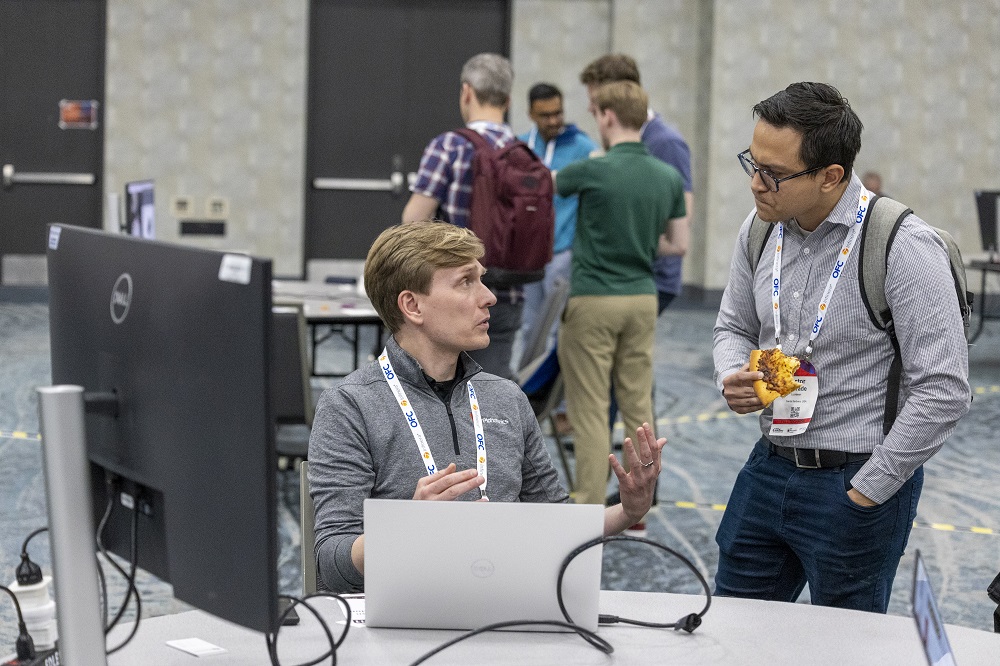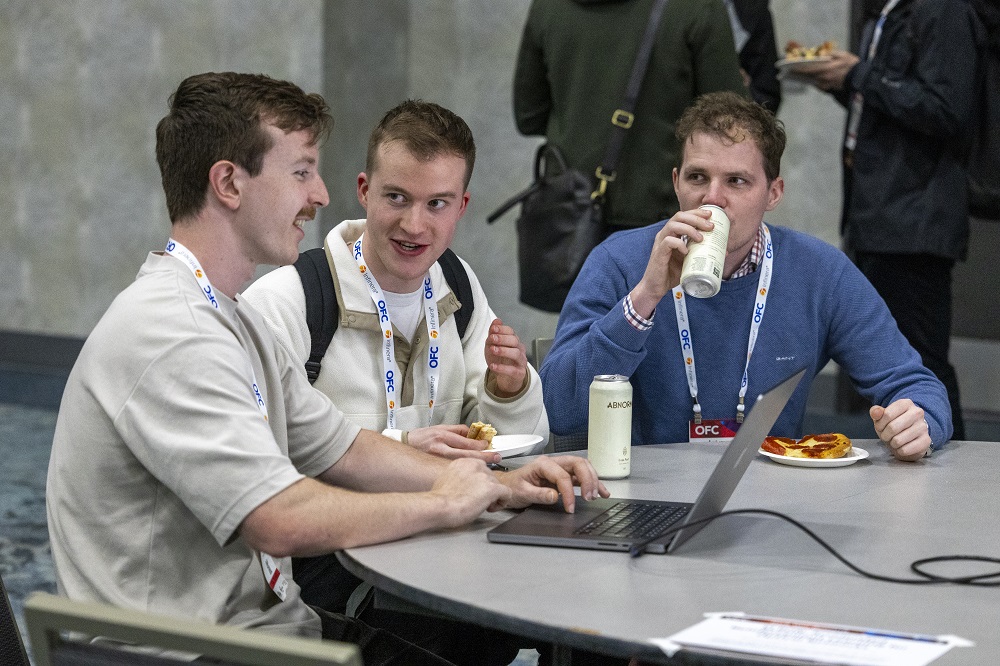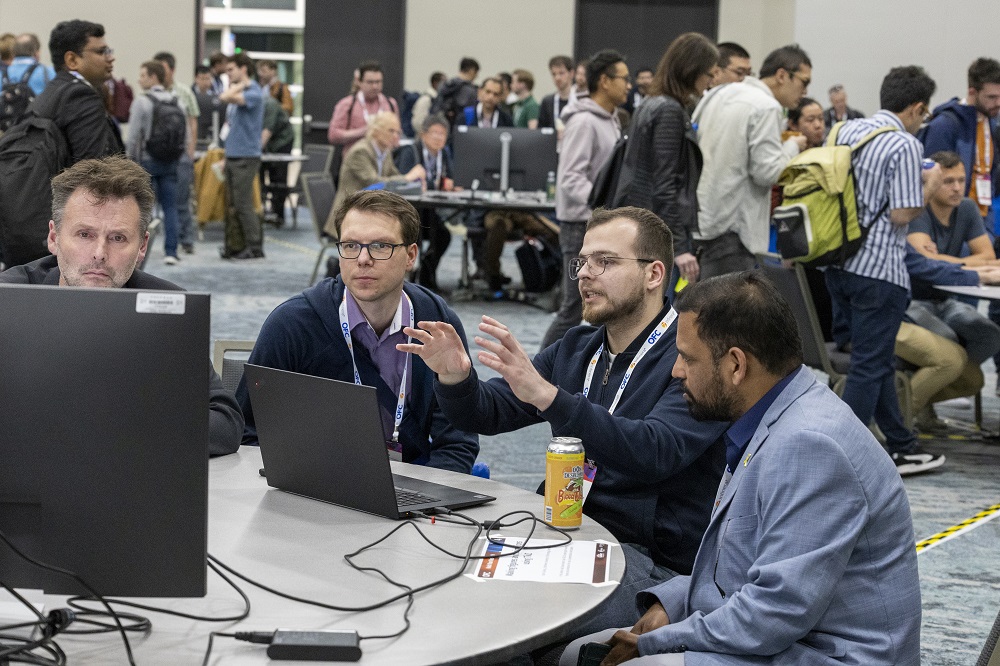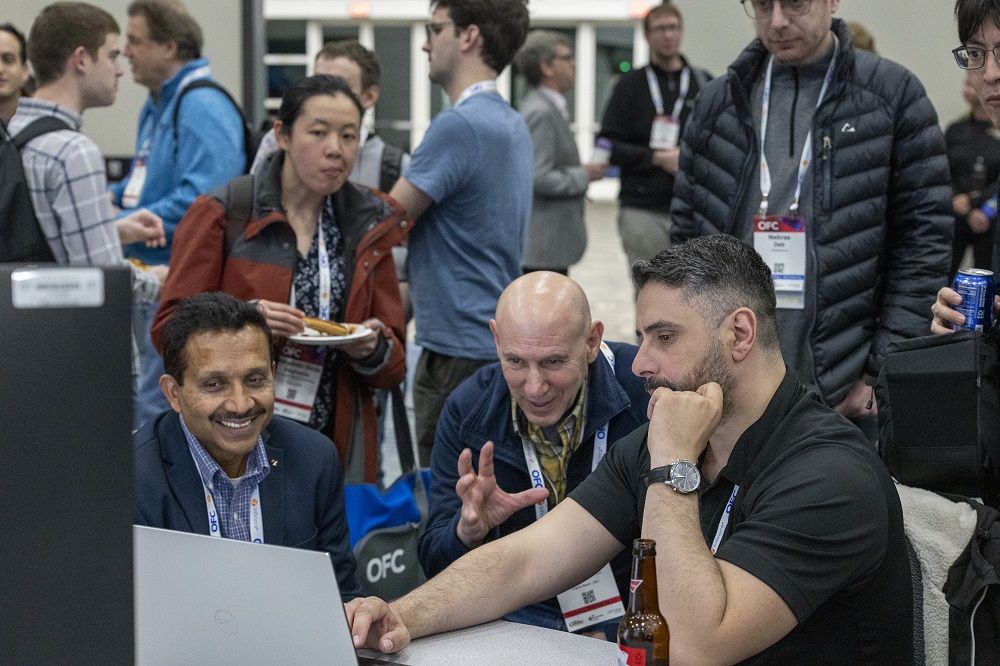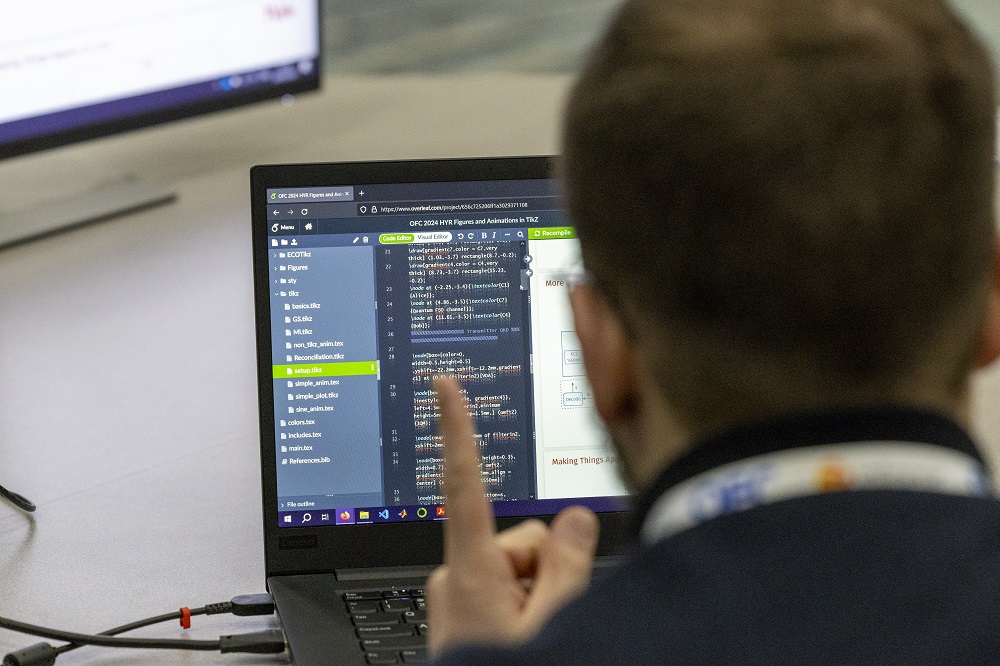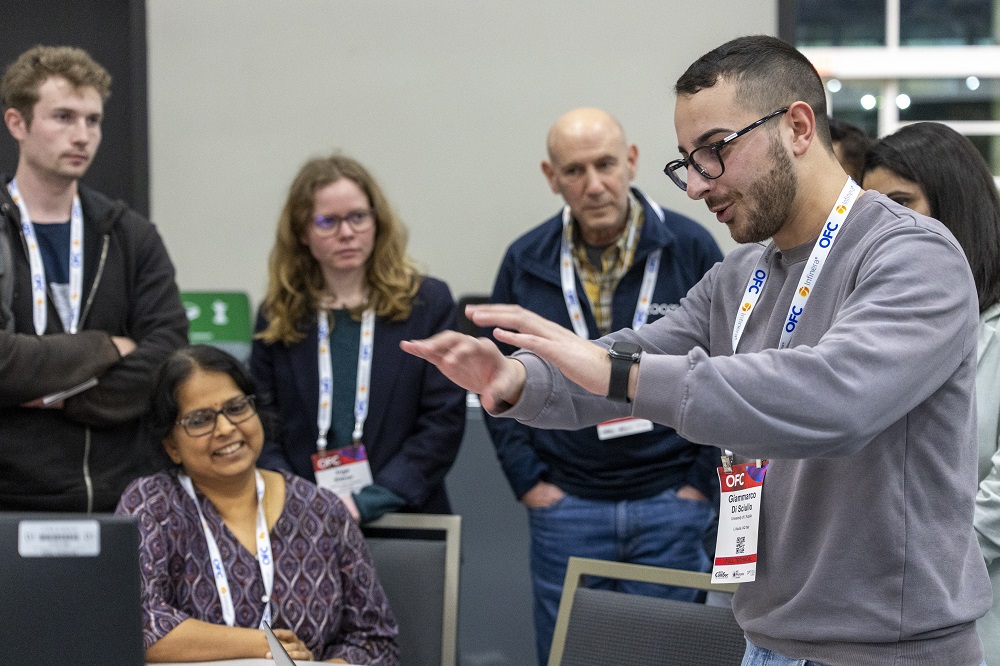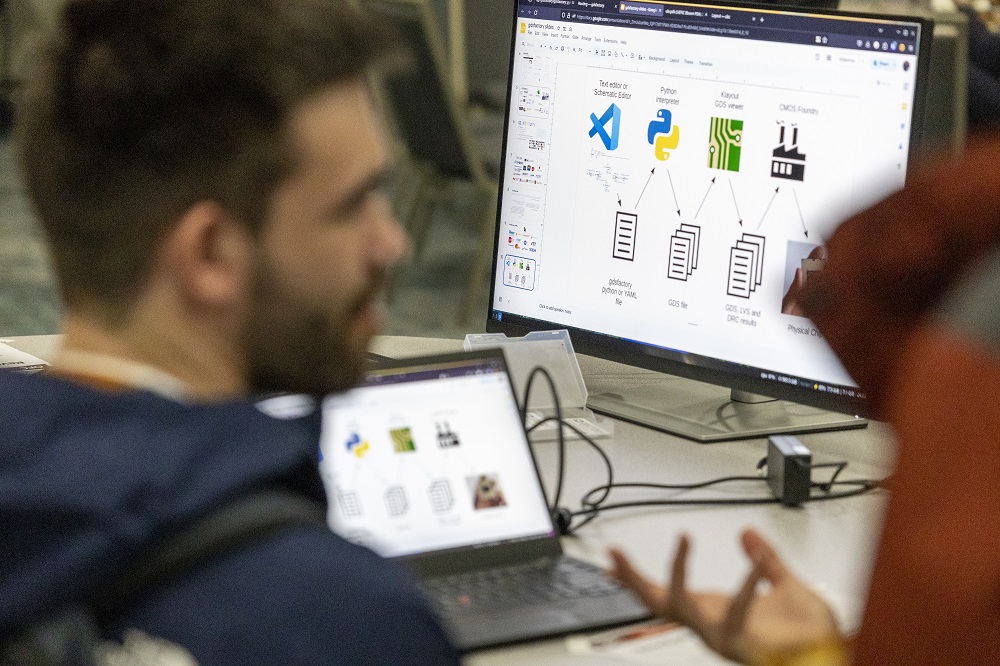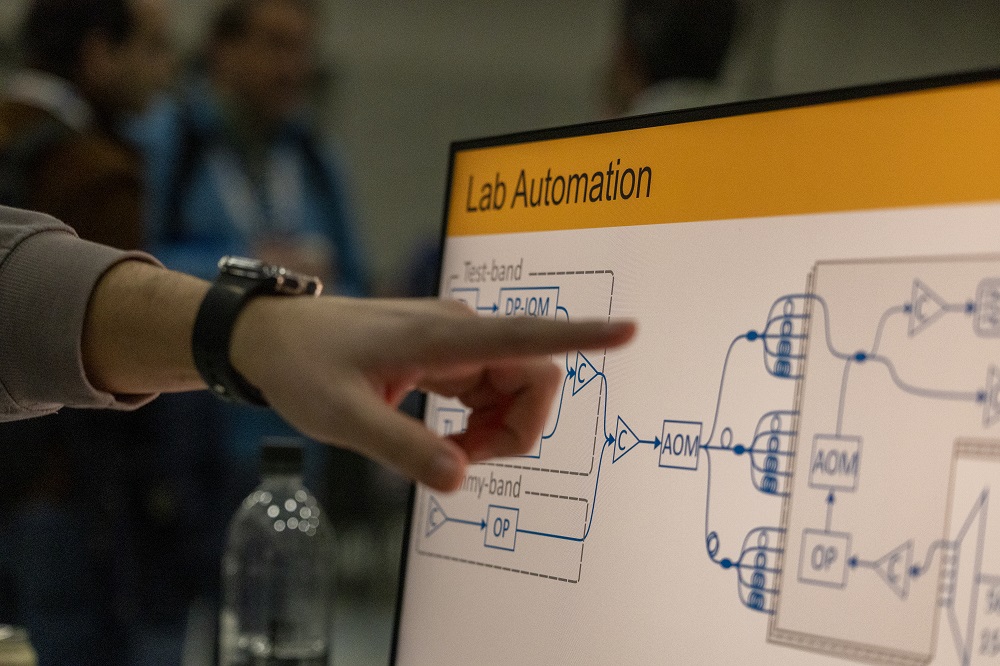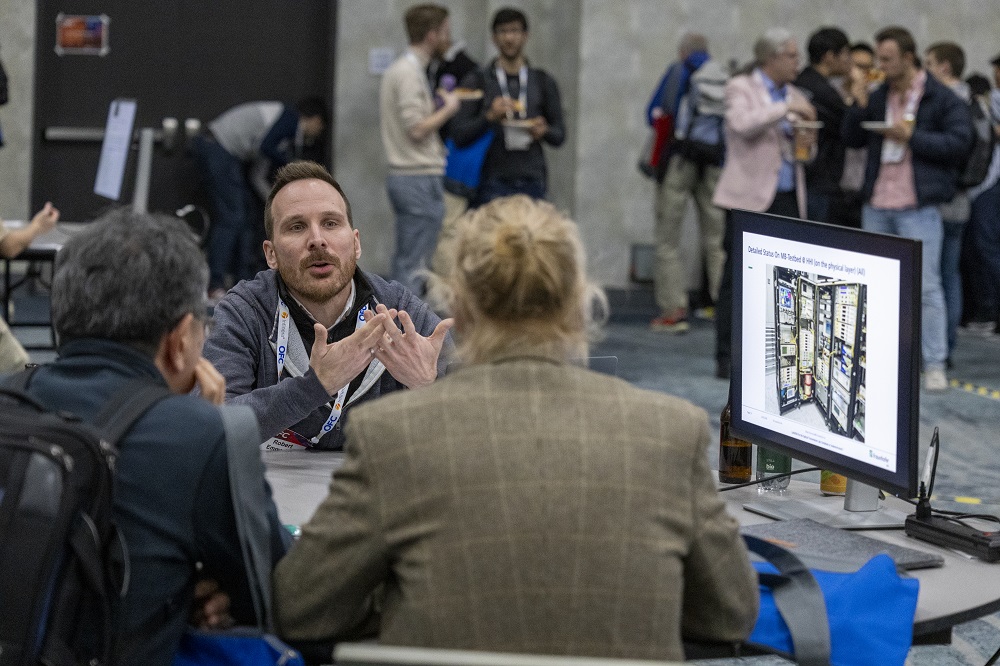Hack your Research! @ OFC 2024
By Vincent
Event Date: Sunday, 24 March 2024, 7pm – 9pm PST
Event Location: Room 6A, San Diego Convention Center, San Diego, California, USA
Link: ofcconference.org/special-events
Organizers:
Henrique Buglia, University College London, United Kingdom
Marco Eppenberger, PsiQuantum, USA
Menno van den Hout, Eindhoven University of Technology, Netherlands
Vincent van Vliet, Eindhoven University of Technology, Netherlands
Advisory Committee:
Nicolas Fontaine, Nokia Bell Labs, USA
Binbin Guan, Microsoft, USA
Roland Ryf, Nokia Bell Labs, USA
Jochen Schroeder, Chalmers University of Technology, Sweden
Demos:
Julia: Your new secret romance?
by Jonas Krimmer, Karlsruhe Institute of Technology, Germany
Julia is an open-source programming language enabling C-level performance with a syntax similar to MATLAB or Python. In this demonstration, you will learn how Julia can speed up your algorithms, simulations, and data processing chains while being interoperable with existing Python or C libraries.
Fine-Tuning Your DSP with Machine Learning
by Manuel S. Neves, Instituto de Telecomunicações, Universidade de Aveiro, Portugal
Join in for a live demo featuring a machine learning tool built with Python’s TensorFlow library. Learn how to optimize Digital Signal Processing (DSP) subsystems while considering real-world constraints like bandwidth, complexity, and transceiver nonlinearities. See how machine learning streamlines DSP design for performance.
LabExT the all in one Lab Automation Tool
by Laurenz Kulmer, ETH Zurich, Switzerland
We are presenting a Lab automation tool developed at our institute with some new features integrated which can greatly improve your daily workflow.
Making figures and animations using tikz
by Kadir Gümüş, Eindhoven University of Technology, Netherlands
In this demo I will show how to use tikz to make good-looking figures and animations for use in presentations and papers.
Space-Division-Multiplexed Transmission Setups and Field Trials
by Giammarco Di Sciullo, University of L’Aquila, Italy
Space-division multiplexed transmission experiments in multi-core and multi-mode fibers, focusing on the experimental setups used in recent high-capacity experiments, are discussed. In addition, the first field-deployed SDM testbed located in the city of L’Aquila is presented.
Physical Layer Simulation and Optimization with MOKka
by Andrej Rode, Vincent Lauinger, Shrinivas Chimmalgi, and Laurent Schmalen, Karlsruhe Institute of Technology, Germany
Machine learning for optimization of the physical layer is currently a popular research topic. To aid research in this field, we introduce our Python library MOKka. We show an interactive demo including constellation shaping, optical channel models and various signal processing blocks.
XLRON: Accelerated Reinforcement Learning for Optical Networks
by Michael Doherty, University College London, UK
XLRON is an open source package built with the JAX numerical computing framework that allows optical network resource allocation problems to be simulated on GPU, giving 2-3 orders of magnitude speed up over CPU-dependent approaches.
Rapid Prototyping: 3D Printing and Modelling
by Lauren Dallachiesa, Nokia Bell Labs, USA
Let’s chat about some 3D modeling basics like getting started with Fusion 360, discuss what free CAD tools exist out there, as well as how to use affordable 3D printers to design and fabricate prototypes faster and easier!
LabVIEW for the Optical Transmission Lab: Outdated or Underestimated ?
by Robert Emmerich, Carsten Schmidt-Langhorst, and Robert Elschner, Fraunhofer HHI, Germany
With the rise of open source, the use of the proprietary graphical programming environment Labview has declined. In this demo, we will present a live experiment using our Matlab-based coherent transport DSP in conjunction with a Labview-based GUI for configuration and lab automation.
Software-defined photonics for datacenter applications
by Daniel Pérez-López, Tsjerk Hoekstra, and David Sánchez, iPronics, Spain
During this demonstration, we will show the first prototype of the iPronics Optical Networking Engine for datacenter management applications that uses Python. The demonstration will include different switching strategy implementations, processing and loss-less operation.
Revolutionize Your Chip Design with GDSfactory
by Joaquin Matres, Google X, USA, and Floris Laporte, Rockley Photonics, USA
In this tutorial we will use machine learning tools (python, jupyter notebooks, and generative AI) to design 3 types of chips. A heater, an MZI filter and a ring resonator. This will allow you to leverage the machine learning tools into chip design.
Consistent PIC simulation and layout design by Ansys Lumerical and open-source layout tools interoperability
by Parya Samadian, Ansys, Canada
During an iterative integrated photonics design process, maintaining the consistency between component/circuit layout design and simulation is challenging. Here we demonstrate Ansys Lumerical’s interoperability with open-source layout tools to streamline this process.
Advanced Photonic Design Automation: ML-Based Equalization and Automated Components Creation
by Elias Giacoumidis and Eugene Sokalau, VPI photonics, Germany
Join us for live demonstrations of machine learning-based equalization in optical transmission systems and device characterization using VPIphotonics ML Framework, as well as the automated creation of photonic components based on the measured S-matrix.
Lightning Talks:
femwell
by Nicolas Fontaine, Nokia Bell Labs, USA
Finite elements in python? FEMWELL
see https://github.com/HelgeGehring/femwell
xarray: store all the data!
by Marijn Rombouts, Eindhoven University of Technology, Netherlands
Managing multidimensional measurement or simulation data can be a challenge in Python, but not with xarray!
see https://github.com/pydata/xarray
Automating experiments in Python
by Carlos Rubio García, Eindhoven University of Technology, Netherlands
Python tool for automating and controlling experiment with remote equipment
linien: a laser stabilization app for the Red Pitaya FPGA
by Andrei Isichenko, UC Santa Barbara, USA
Linien is a user-friendly Python-based app for the Red Pitaya FPGA for laser frequency locking that helps get experiments running quickly.
see https://github.com/linien-org/linien
Revolutionize your chip design with SAX
by Joaquin Matres, Google X, USA
Autograd and XLA for S-parameters - a scatter parameter circuit simulator and optimizer for the frequency domain based on JAX.
see https://github.com/flaport/sax
Photos:
